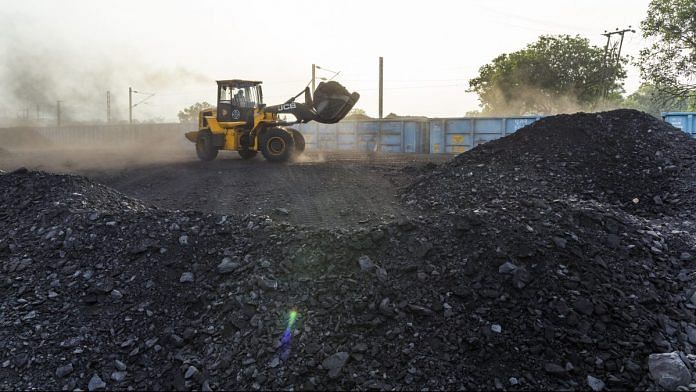Thank you dear subscribers, we are overwhelmed with your response.
Your Turn is a unique section from ThePrint featuring points of view from its subscribers. If you are a subscriber, have a point of view, please send it to us. If not, do subscribe here: https://theprint.in/subscribe/
The Seminar Hall in National Institute of Technology Karnataka, Surathkal, in 2016, was packed with students twice its capacity. Students from the “core” engineering branches, especially Metallurgical and Mining, who struggled to find well-paying jobs, jostled to view the “pre-placement presentation” by one of the most awaited companies for campus placement. This was Coal India Limited. The air in the room was filled with the expectation of the candidates under pressure to land their “dream job” at Public Sector Undertakings like Coal India. Back then, most students never thought that this was one of the world’s most emissive companies responsible for significant greenhouse gas emissions, causing climate change and pollution, whose manifestations have multi-dimensionally impacted the lives of Indians.
At the Conference of the Parties in Glasgow in 2021, Prime Minister Narendra Modi announced India’s climate actions, including a commitment to achieve net-zero emissions by 2070. India has made significant progress in renewable energy capacity, doubling since 2021 to cross 200GW by 2025. However, coal consumption has also continued to grow, accounting for 55% of the national energy mix and 74% of total power generation. In its recent assessment of India’s financial sector, the World Bank identified coal dependence of the power sector as the key transition risk, a concern shared by the International Monetary Fund. Despite the 2070 target, India still lacks a timeline and a plan to phase out the coal industry. Even Indian investors are aware of the impact of global warming and “weather-related disasters”.
Coal’s near-term role in economic development and energy security is understandable, but sunsetting the industry will take a long time, which maybe too late for climate action. The government should develop a comprehensive coal phase-out plan with specific dates for plant closures and the end of new coal funding. As of 2024, 101 countries have committed to “No New Coal” or abandoned plans for coal. This includes developing countries with coal dependence like Chile, Colombia and Indonesia. In contrast, the latest budget increased the Ministry of Coal’s allocation by 255% including for coal exploration. A phaseout plan is needed to overcome these constraints and keep pace with countries’ greening their economies
There are three critical components of the phaseout plan. First, a Just Transition plan overseen by a dedicated institution covering training and healthcare support for the 26 lakh workers in the sector, 70% of which are informally employed. Support packages for workers, their families affected by coal plant proximity will increase the transition’s political acceptance. Building relations with workers, local unions, will take years, and hence, a plan that shows a clear intent to invest will smooth the transition.
Second, maintaining energy reliability and security demands coordinated grid planning alongside clean energy expansion. While scaling renewable generation is commendable, grid modernization remains a critical gap. India requires 61 GW of energy storage capacity by 2030—far more to fully transition from coal. This must be paired with upgrades to transmission infrastructure and deployment of smart grids. Reducing coal dependence in heavy industries like steel necessitates scaling green hydrogen production. Together, these infrastructure investments require substantial cross-cutting research and development support.
Third, identifying solutions to reduce dependence of railways on coal freight. Presently, coal is approximately half the freight volume, and its share of freight revenue for railways has increased from 2013 to 2023. Railways will require funding to build capabilities to diversify revenue to alternatives with a steadily growing demand like containers, consumer goods, pharmaceuticals and automotive.
Navigating opposition leaders who will cause friction will be more challenging than developing a plan. However, the long-term stability of the central government led by the Bharatiya Janata Party (BJP) and its run of success in recent state elections maximizes its chances of managing a transition that successive governments might not enjoy. It’s fortuitous that the states of Odisha, Chhattisgarh, Madhya Pradesh, and Maharashtra, with the bulk of the coal sector employment, are administered by the BJP and allies, making it easier to gain political buy-in.
Most importantly, developing a coal phaseout plan will send a strong signal to clean energy and climate-aligned investors of a growing opportunity and attract the estimated funding gap of USD 2 trillion, required by 2035. This will especially help unlock debt from development finance institutions and grants from international aid agencies. Institutional investors who are reducing coal exposure in their portfolios will hold Indian investments longer. These investments will generate future resilient jobs. This capital will help manufacture low-carbon products and serve the growing demand for low-carbon goods, which are exempt from carbon taxes such as the Carbon Border Adjustment Mechanism, leading to an export-led growth required to become Viksit Bharat.
If not, we will have another generation scrambling for jobs in a fossil fuel economy, exacerbating the ongoing climate crisis. The trillion-dollar question is: can we afford it?
These pieces are being published as they have been received – they have not been edited/fact-checked by ThePrint.


